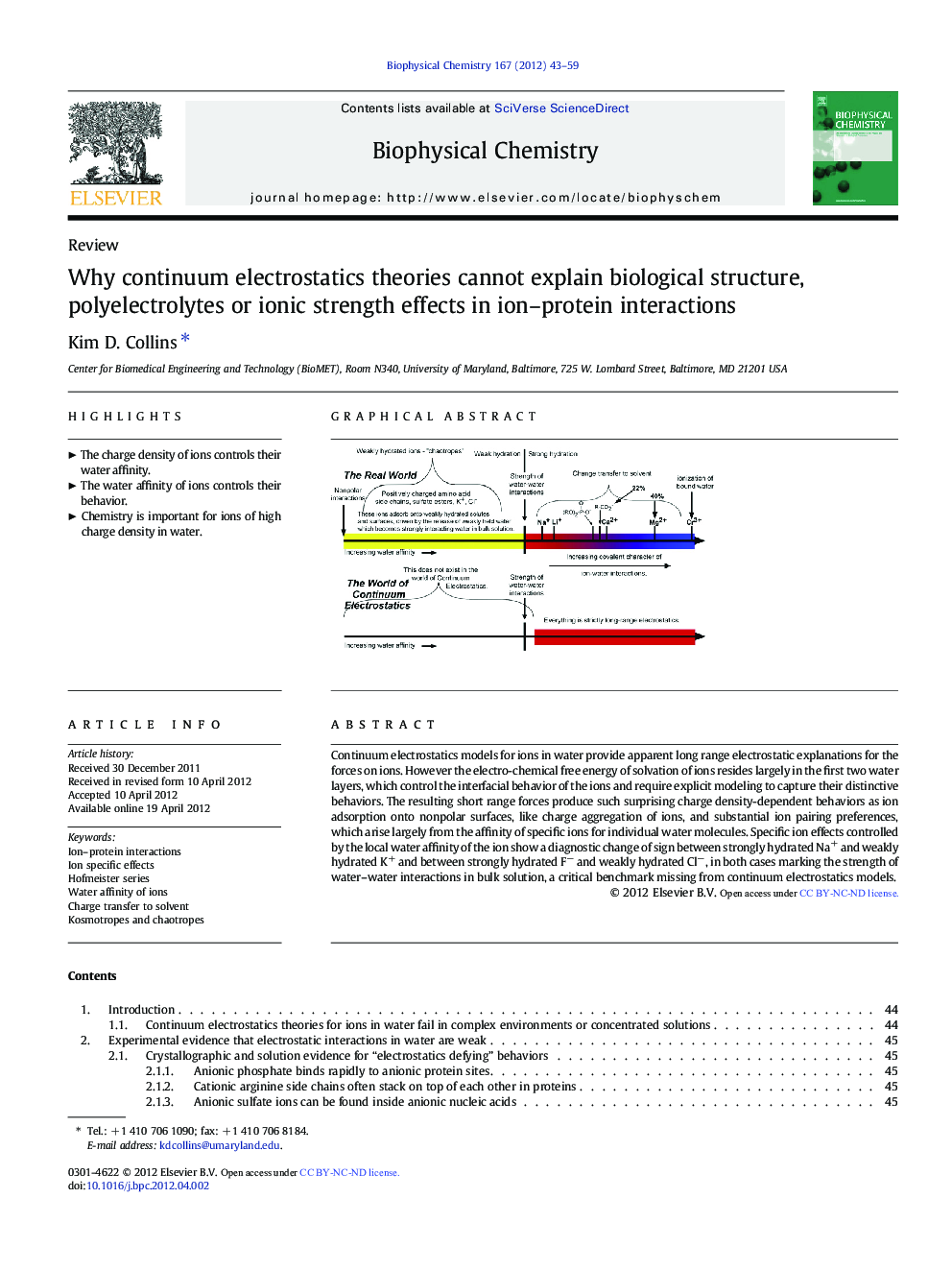| Article ID | Journal | Published Year | Pages | File Type |
|---|---|---|---|---|
| 5371229 | Biophysical Chemistry | 2012 | 17 Pages |
Continuum electrostatics models for ions in water provide apparent long range electrostatic explanations for the forces on ions. However the electro-chemical free energy of solvation of ions resides largely in the first two water layers, which control the interfacial behavior of the ions and require explicit modeling to capture their distinctive behaviors. The resulting short range forces produce such surprising charge density-dependent behaviors as ion adsorption onto nonpolar surfaces, like charge aggregation of ions, and substantial ion pairing preferences, which arise largely from the affinity of specific ions for individual water molecules. Specific ion effects controlled by the local water affinity of the ion show a diagnostic change of sign between strongly hydrated Na+ and weakly hydrated K+ and between strongly hydrated Fâ and weakly hydrated Clâ, in both cases marking the strength of water-water interactions in bulk solution, a critical benchmark missing from continuum electrostatics models.
Graphical abstractDownload full-size imageHighlights⺠The charge density of ions controls their water affinity. ⺠The water affinity of ions controls their behavior. ⺠Chemistry is important for ions of high charge density in water.
